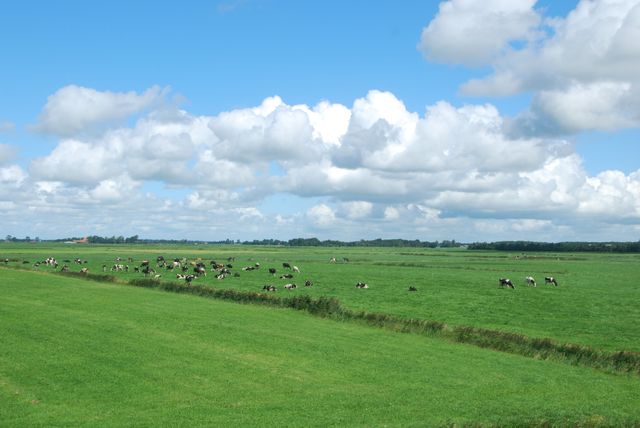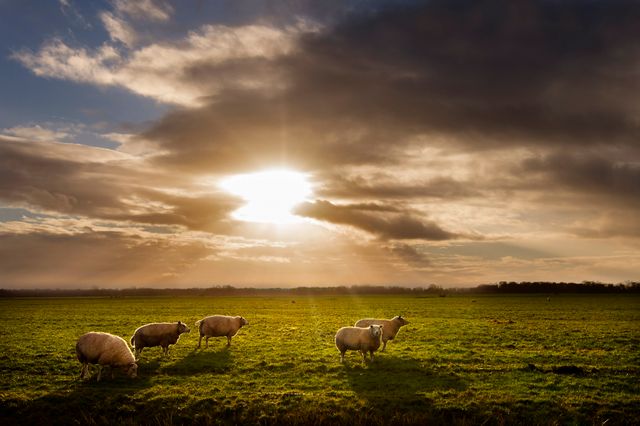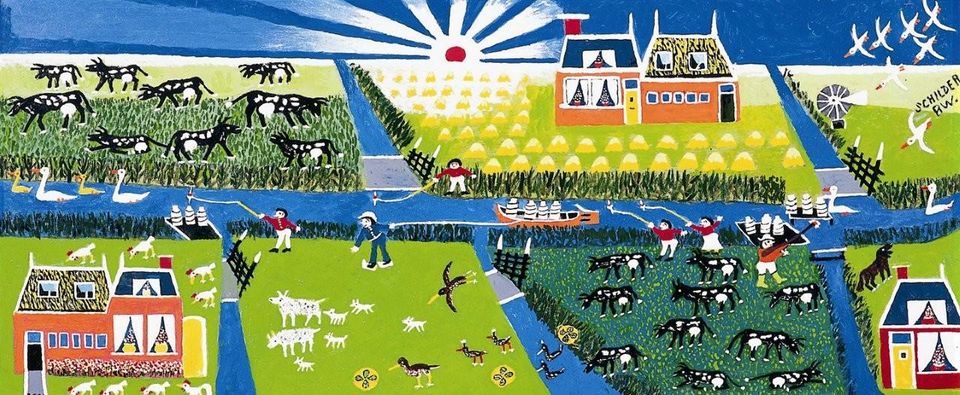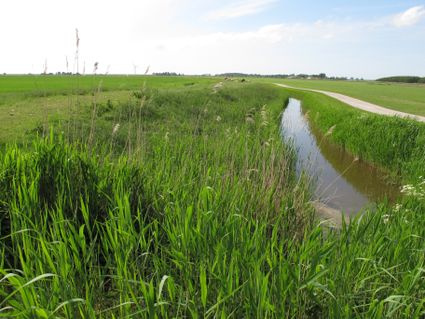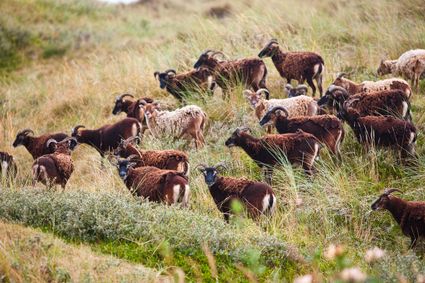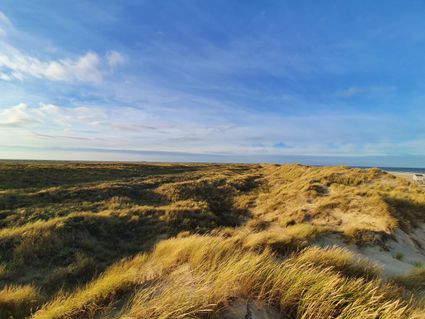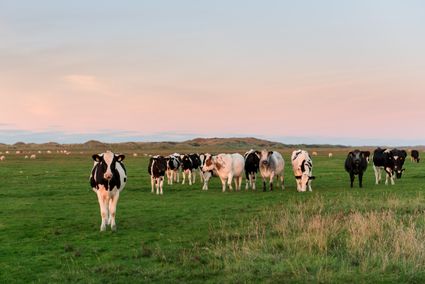Ruurd Wiersma: walls, clogs and milk churns
Walls, wooden shoes, milk cans. Naive painter Ruurd Wiersma created paintings on everything in his surroundings. They give wonderful insight into farm life on the Frisian clay north of Dokkum.
Ruurd Wiersma
Water was a main means of transportation in Northeast Friesland for a long period of time. Milkman Ruurd Wiersma picked up milk cans from the farmers in his boat and brought them to the milk factory. In 1964 he moved into two small labourers houses in Burdaard on the river Ee, where he lived until his death.
Just a year after moving in his gas heater exploded. Wiersma hung white wallpaper to hide the thick layer of soot. These large empty white areas inspired him to paint. He bought paintbrushes and pots of bicycle paint and began his work. He painted ‘de vierjaargetijden’ (the four seasons) over a period of five years. The room's four walls reflect the Frisian landscape he came to know so well as a milkman. The unique panorama was quickly discovered by fans of naive art.
After the walls came the ceiling, the furniture and all the other objects in the house, even his shoes. Wiersma used absolutely everything as a canvas for his art. He also made small paintings on hardboard on request. He always remained true to his bicycle paint. You can visit the houses on the river Ee. Everything is exactly as Wiersma left it when he died in 1980. Including the big bottle of boerenjongens (raisins soaked in brandy) that the painter offered his guests.
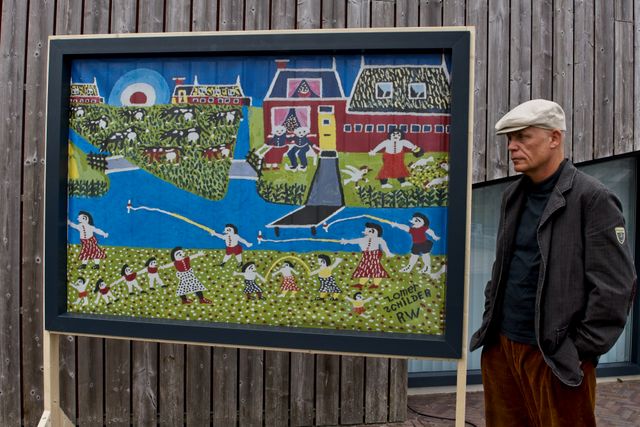

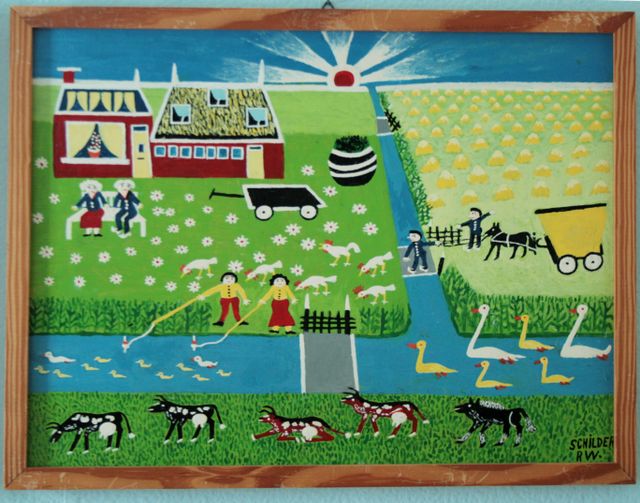
The oldest and largest monastery in Friesland
Wiersma was born in Rinsumageest, about six kilometres from Burdaard, in 1904. De Moark (Murk) flows through the village. A milk factory was built on the northern embankment in 1901. The steam dairy factory cooperative ‘De Toekomst’ (The Future). The chimney was saved after its closing in 1976. Rinsumageest is situated on the border of clay, peat and sand. Looking to the south you see the Frisian forests and if you turn around you look out over the vast grasslands.
Friesland's oldest abbey once stood just north of Rinsumageest, near Sibrandahus, the Cistercian Klaarkamp Abbey that was built in 1163 on a mound 4 metres high and with a surface area of 2.5 ha. The buildings had already been torn down by around 1580 and the mound followed between 1858 and 1941.
The parallel ditches are the only reminder of this once powerful abbey that consisted of many monastic granges (including Schiermonnikoog) and approximately 80 farms. They are the remains of the double canal that once encircled the complex. Are you interested in what life used to be like in the abbey and the impact the monks and the lay-brothers had on the Frisian landscape? Then you must visit the Klooster Claercamp museum where you will learn about its history.
